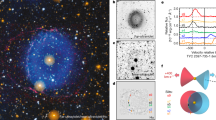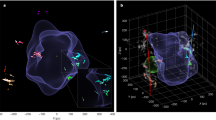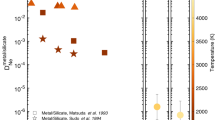Abstract
IN a recent communication (NATURE, Jan. 7, p. 12) C. T. Elvey has applied the ‘expanding shell’ theory of novæ to calculate the maximum density at which oxygen can be made to give the nebulium spectrum. In Nova Aquilæ, No. 3 (discovered June 8, 1918), the line λ5007 was first seen on June 27, when its breadth was 55 A.; and the gases are therefore assumed to have been travelling outwards for 19 days with a velocity of 1700 km./sec. before reaching a low enough density to emit this line. If, then, the phenomena are due to the reversing layer of the star being blown off bodily as a shell of gas, we can find the density in the shell at any moment after the outburst, given the initial density and radius. Elvey finds in this way that at the first appearance of the nebulium lines the gas must have a density of the order 10-17 gm./c.c.
This is a preview of subscription content, access via your institution
Access options
Subscribe to this journal
Receive 51 print issues and online access
$199.00 per year
only $3.90 per issue
Buy this article
- Purchase on SpringerLink
- Instant access to full article PDF
Prices may be subject to local taxes which are calculated during checkout
Similar content being viewed by others
Author information
Authors and Affiliations
Rights and permissions
About this article
Cite this article
PIKE, S. The Nebulium Spectrum in New Stars. Nature 121, 136–137 (1928). https://doi.org/10.1038/121136b0
Issue date:
DOI: https://doi.org/10.1038/121136b0



